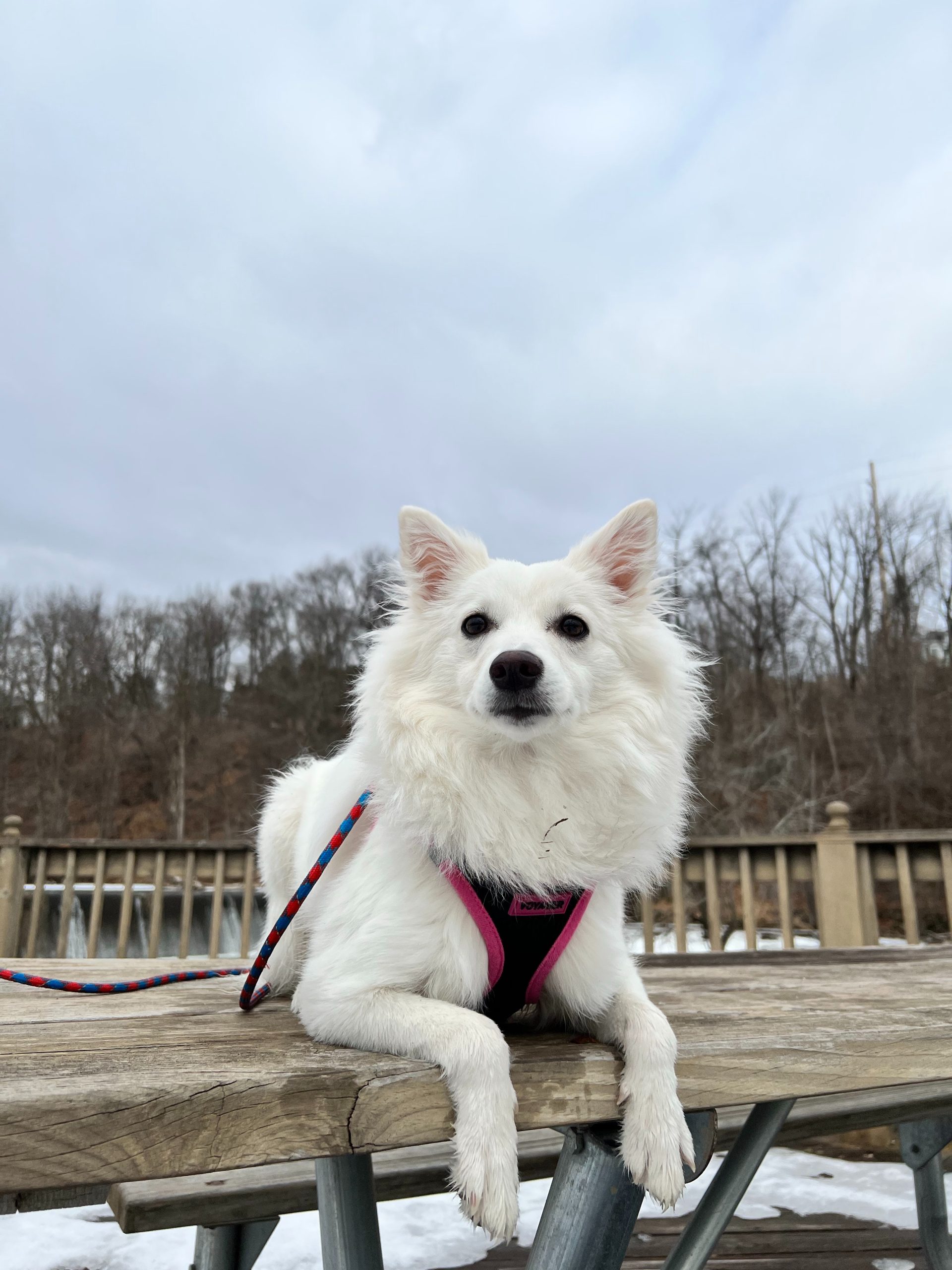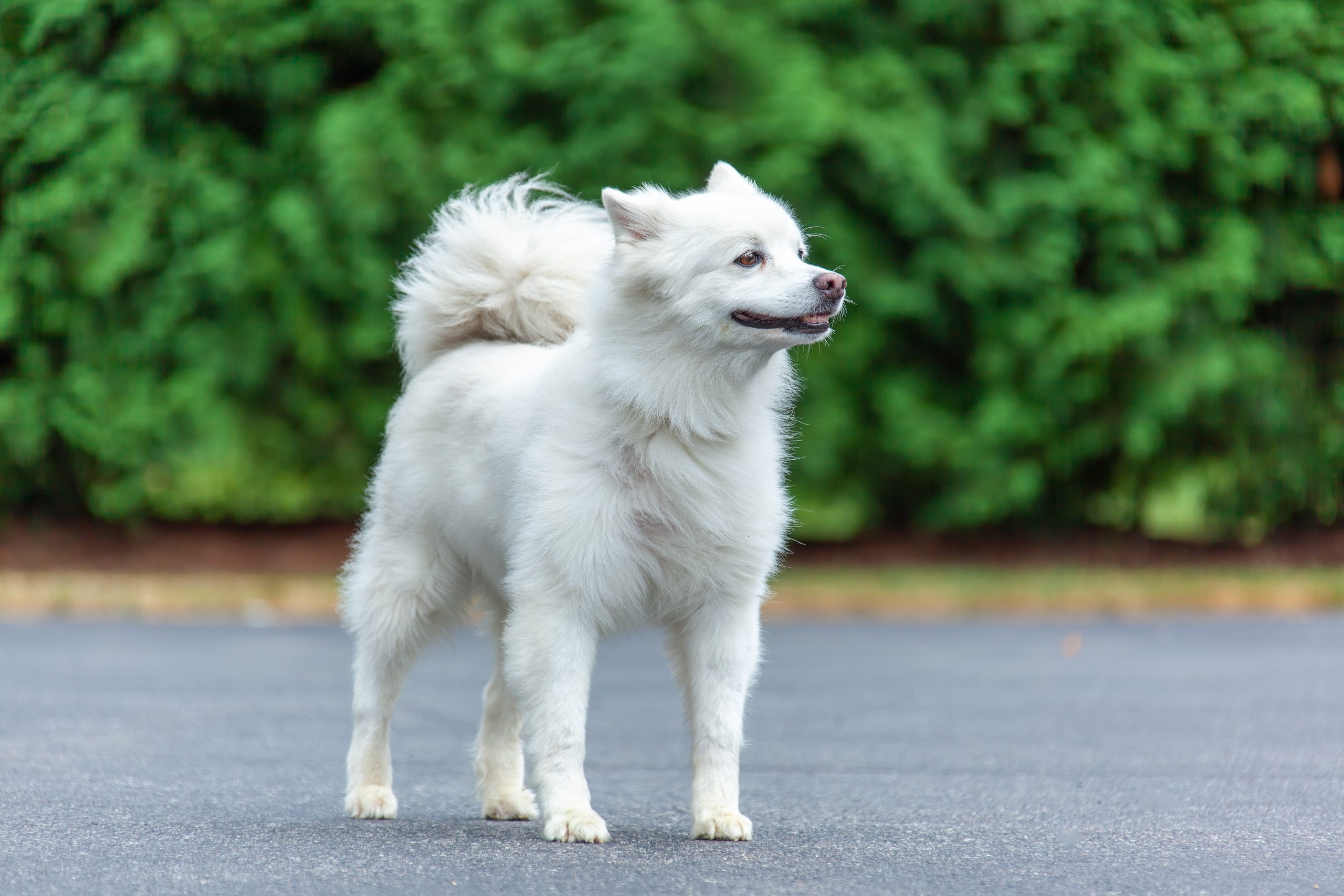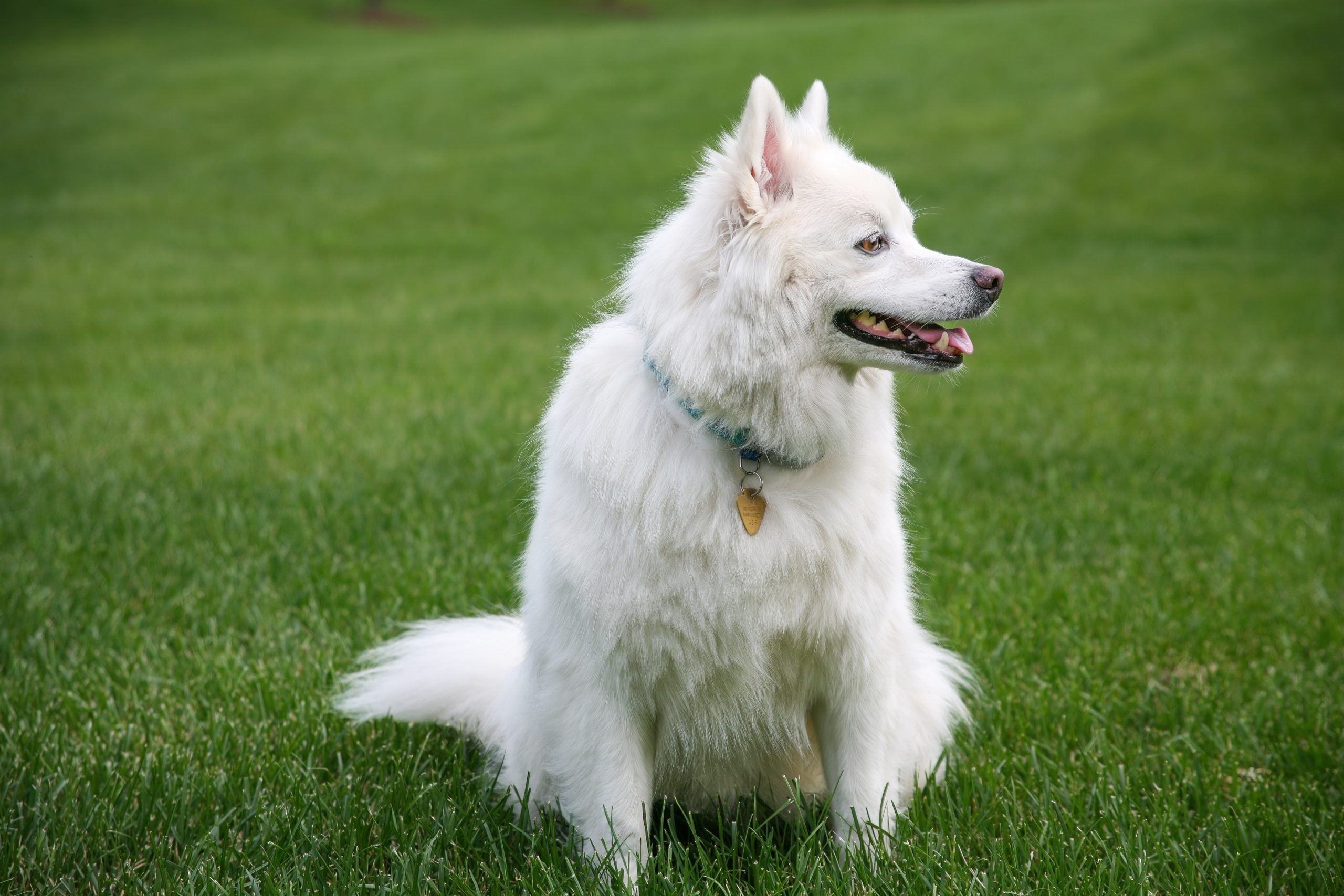The American Eskimo Dog is a perfect example of a brains-and-beauty combo, blending remarkable excellent looks with a quick and sharp mind. Eskies are neither timid nor aggressive; instead, they are always alert and sociable, albeit a little reserved when making new companions. Standard, miniature, and toy sizes are available for the American Eskimo Dog, which can reach heights of up to 19 inches at the shoulder or as low as 9 inches. A lion-like ruff around the chest and shoulders, a dense, glittering white coat, a smiling face with black nose, lips, and eye rims that transmit a keen, intelligent attitude, and a plumed tail carried over the back are all distinguishing features. Some Eskies have markings that are described as being the delectable color “biscuit cream.”
They walk with a confident, quick pace. Due to their sociable nature and insistence on being included in family life, eskies can exhibit problematic behaviors when ignored or poorly taught. The witty, family-friendly Eskie is one of the most trainable breeds and almost coined the term “eager to please.”








 Health
Health Grooming
Grooming Exercise
Exercise Training
Training Nutrition
Nutrition